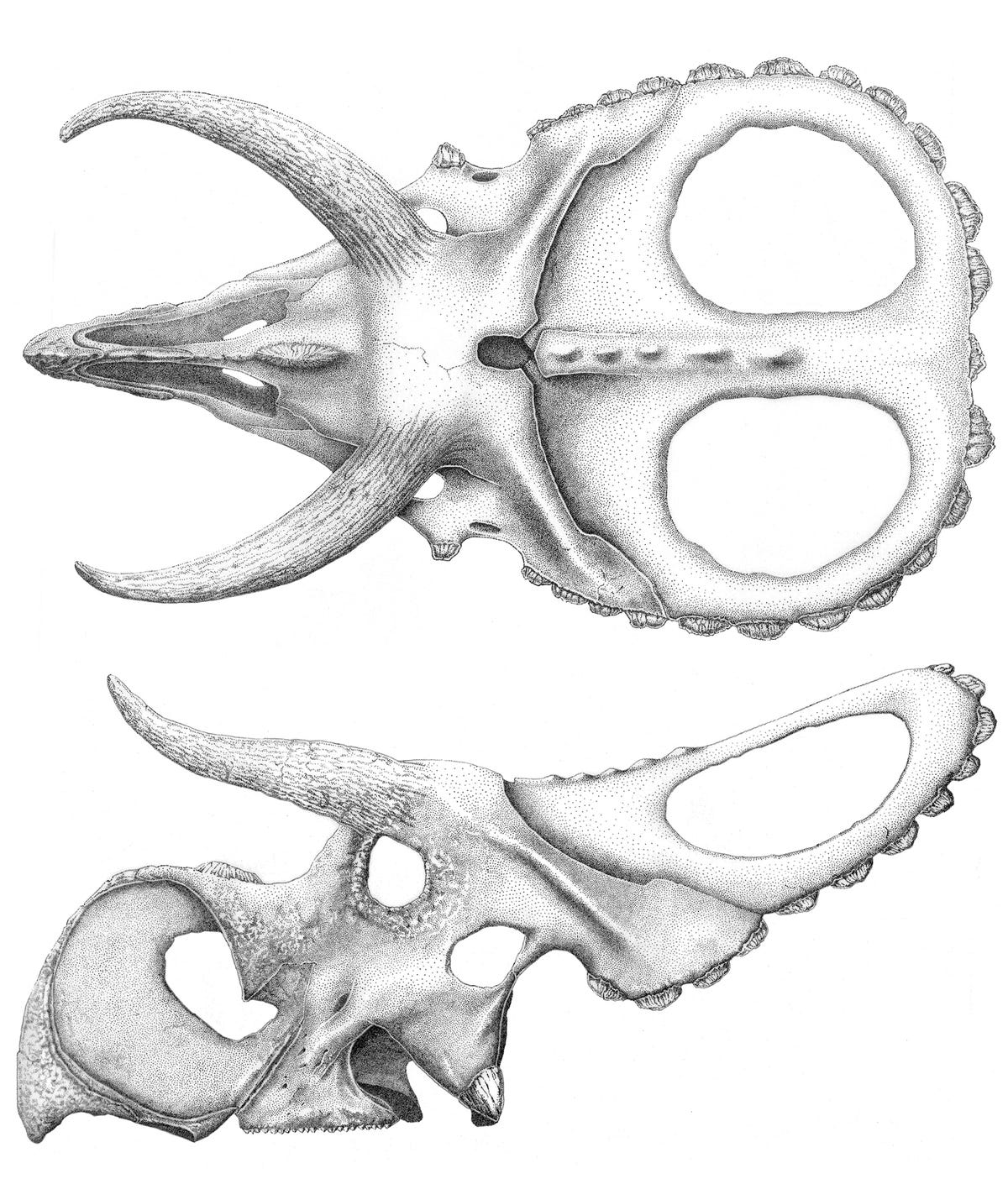Newly discovered dinosaur rears its mighty nose (pictures)
Announced as a new species of dinosaur on Wednesday, <i>Nasutoceratops titusi</i> is a cousin of Triceratops, but with an impressive proboscis and swooping, bull-like horns.

A nose with thorns
Leave it to scientists to be charmingly literal.
The first part of the name they've given a newly discovered species of dinosaur translates as "big-nose horned face." And as you can see from the skull reconstruction above -- with its swooping spikes and Durante-esque proboscis -- that pretty much does the trick.
The fossilized remains of the dino, Nasutoceratops titusi, were unveiled Wednesday by the Natural History Museum of Utah, while a research paper announcing the new species appeared in the U.K. scientific journal Proceedings of the Royal Society B.
Nasutoceratops was actually discovered in 2006, in southern Utah's Grand Staircase-Escalante National Monument (the second part of the dino's name honors Alan Titus, a paleontologist at Grand Staircase-Escalante). But it was announced as a new species only Wednesday. The pronounced nose and horns are among its salient features.
The 15-foot, 2-ton dino is a cousin of Triceratops, which you may remember as the dramatically helmeted and horned beast that always seemed to be forced to face off against a T. rex in the museum displays of your youth. Both Triceratops and Nasutoceratops were members of the "ceratopsids" family, and both were plant eaters.
Bull or parrot?
Did we mention Nasutoceratops had a large nose? This artist's rendering -- with the scales above the nostrils seizing the light -- should drive the point home.
But why so large? Was this fellow the truffle-snuffer-upper of its time? Apparently not, as the olfactory sense seems to have been beside the point.
"The jumbo-sized schnoz of Nasutoceratops likely had nothing to do with a heightened sense of smell -- since olfactory receptors occur further back in the head, adjacent to the brain," Scott Sampson said in a Natural History Museum of Utah press release. Sampson, lead author of the research paper on the dino that was published Wednesday by The Royal Society, says the big nose is a mystery: "The function of this bizarre feature remains uncertain."
The theory regarding those swooping, bull-like horns is a little more certain, however. Despite the matador-piercing function that our use of "bull-like" might suggest, these horns apparently weren't designed for fighting predators. Rather, the horns involved -- quite appropriately -- horniness. The dominant hypothesis is that they were designed to impress members of the opposite sex -- and serve as a warning to members of the same sex who might want to make a move.
"The amazing horns of Nasutoceratops were most likely used as visual signals of dominance and, when that wasn't enough, as weapons for combating rivals," says Mark Loewen, a co-author of the research paper who's also quoted in the release. A present day example of similar structures would be deer antlers.
As for the bony frill at the back of the animal's head, it would seem to be relatively unadorned, without the sharper, spike-like structures seen on the Triceratops.
Spiky Triceratops
For comparison, here's a Triceratops skull. You can see the spikier frill, the straight horns, and the pointed third horn on the nose -- a feature that's absent from the Nasutoceratops skull shown in this gallery and that appears as a bony nub in the artist's renderings. The Natural History Museum of Utah describes the third horn of the Nasutoceratops as low, narrow, and bladelike.
Photo by Ed T.
An A+ for Lund
Not every graduate student discovers a new species of dinosaur. This shot shows Eric Lund assembling a Nasutoceratops skull. Now studying at Ohio University, Lund was previously a Master's student at the University of Utah, where he unearthed Nasutoceratops titusi in 2006 in southern Utah's Grand Staircase-Escalante National Monument. The work was part of a collaborative project involving the Natural History Museum of Utah, the Denver Museum of Nature & Science, and the Bureau of Land Management. Additional specimens have since been unearthed.
"Nasutoceratops is a wondrous example of just how much more we have to learn about the world of dinosaurs," Lund is quoted as saying in the Utah museum's press release. "Many more exciting fossils await discovery in Grand Staircase-Escalante National Monument."
Scott Sampson, lead author of the Nasutoceratops research paper published Wednesday by The Royal Society, calls Grand Staircase-Escalante "the last great, largely unexplored dinosaur boneyard in the lower 48 states." During the Late Cretaceous period, it was part of a swampy, subtropical, Australia-size continent known as Laramidia. Laramidia was separated from what's now North America's eastern half (then a continent known as Appalachia) by a shallow sea -- the Western Interior Seaway -- that stretched from the Arctic Ocean down to the Gulf of Mexico.
This shot gives you a powerful idea of how large Nasutoceratops titusi (and its nose) were (that appears to be the nose that Lund is cradling).

Noses and knowledge
Laramidia was thought to be home to two distinct communities of dinosaurs -- one in the north (an area that includes present-day Alberta, Canada, and Montana) and the south (New Mexico, Texas, Utah). And the discovery of Nasutoceratops titusi supports that theory. Scientists are now left to figure out how a land mass as small as Australia could support so many large dinosaurs.
So far, most of the Laramidian dino discoveries have happened in the north, but Nasutoceratops titusi is one of more than a dozen unearthings that have occurred in the south over the last decade or so. According to the Natural History Museum of Utah, the new discoveries are helping researchers puzzle out the mystery of Laramidia's crowds of dinosaurs.
They'e also giving us more and more strange creatures to marvel at -- impressive proboscises and all.

